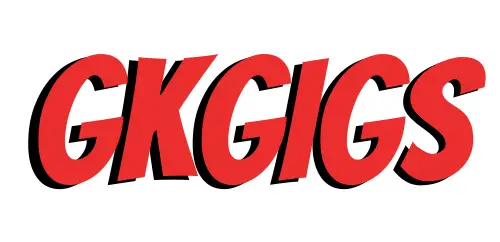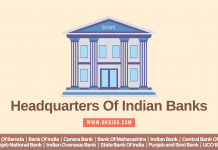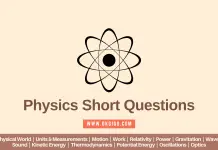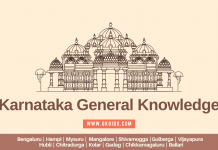
Last Updated: 6 May 2025
Bhāratīya Saṃvidhāna or The Constitution of India is the Governing Law of India.
The Constitution of India is one of the longest-written laws on earth. If You dig deeper into the rules of the Nation, You will find some fascinating facts about the law.
There are many facts and figures one must know and have Knowledge about the Constitution.
In this article we have included Important Objective Questions about the:
- Articles
- Schedules
- Preamble
- Judges
- Special Days
- Founding Fathers
- Important persons
- Fundamentals, etc.
Read all the 100 Important Questions on the Constitution of India and Boost Your Knowledge.
Quiz On Constitution Of India
1. Who is the father of the Indian Constitution?
a) Jawaharlal Nehru
b) B. R. Ambedkar
c) Mahatma Gandhi
d) Dadabhai Naoroji
Answer
b) B.R. Ambedkar
2. Which language was the Indian Constitution written in?
a) Sanskrit
b) English
c) Hindi
d) English & Hindi
Answer
d) English & Hindi
3. Who was the Chairman of the Drafting Committee?
a) Benegal Narsing Rau
b) B. R. Ambedkar
c) Rajendra Prasad
d) Jawaharlal Nehru
Answer
b) B. R. Ambedkar
4. When was the Constitution of India adopted by the Constituent Assembly of India?
a) 26 November 1947
b) 26 November 1948
c) 26 November 1949
d) 26 November 1950
Answer
c) 26 November 1949
5. When did the Constitution of India become effective?
a) 26 January 1949
b) 26 January 1950
c) 15 August 1949
d) 15 August 1950
Answer
b) 26 January 1950
6. Which Act was replaced by the Constitution of India as the country’s Fundamental Governing Document?
a) Government of India Act 1935
b) Government of India Act 1937
c) Government of India Act 1945
d) Government of India Act 1947
Answer
a) Government of India Act 1935
7. When does India celebrate its Constitution?
a) 2nd October
b) 15 August
c) 26 January
d) 24 February
Answer
c) 26 January
8. When was the word “Secular and Socialist” word added to the Indian Constitution?
a) 1976
b) 1971
c) 1977
d) 1975
Answer
a) 1976
9. What is the Original Title of the Indian Constitution in Sanskrit?
a) Bhāratīya Vesabhūsā
b) Bhāratīya Saśastra
c) Bhāratīya Saṃvidhāna
d) Bhāratīya Vidyā Bhavan
Answer
c) Bhāratīya Saṃvidhāna
10. How many branches are in the Indian Constitution?
a) 2
b) 3
c) 4
d) 5
Answer
b) 3
Related: 100+ Indian Constitution GK Questions And Answers
11. Name the branches of the Indian Constitution?
a) Executive, Judiciary
b) Executive, Legislature
c) Judiciary, Legislature, High Court
d) Executive, Legislature, Judiciary
Answer
d) Executive, Legislature, Judiciary
12. How many chambers are there in the Indian Constitution?
a) 2
b) 3
c) 4
d) 5
Answer
a) 2 (Rajya Sabha and Lok Sabha)
13. Under Judiciary how many Courts are there?
a) 4
b) 5
c) 1
d) 3
Answer
d) 3 (Supreme Court, High Courts, and District Courts)
14. When was the 104th Amendment of the Constitution of India updated?
a) 25 January 2019
b) 25 January 2020
c) 31 January 2019
d) 31 January 2020
Answer
b) 25 January 2020
15. Where is the Original Constitution preserved?
a) Noida
b) Uttar Pradesh
c) New Delhi
d) Madras
Answer
c) New Delhi
16. When was the Indian National Flag adopted?
a) 15 August 1946
b) 15 August 1947
c) 22 July 1947
d) 22 July 1948
Answer
c) 22 July 1947
17. Who presented the “Objective Resolution” of the Indian Constitution?
a) Jawaharlal Nehru
b) B. R. Ambedkar
c) J. B. Kripalani
d) H. C. Mukherjee
Answer
a) Jawaharlal Nehru
18. How many members were appointed to the Drafting Committee by B. R. Ambedkar?
a) 4 Members
b) 5 Members
c) 6 Members
d) 7 Members
Answer
c) 6 Members
The Members Are:
1) Alladi Krishnaswamy Iyer
2) Khaitan
3) Mitter
4) Muhammed Sadulla
5) Munshi
6) N. Gopalaswami Ayyangar
19. How many Articles were there when the constitution of India came into force on 26 January 1950?
a) 365 Articles
b) 375 Articles
c) 414 Articles
d) 395 Articles
Answer
d) 395 Articles
20. Who was the first Speaker of the Lok Sabha?
a) Neelam Sanjiva Reddy
b) G. V. Mavlankar
c) Shivraj Patil
d) M. A. Ayyangar
Answer
b) G. V. Mavlankar
Related: Manipur General Knowledge Questions And Answers
21. Who became the first Indian Judge in the International Court of Justice?
a) Ganesh Mavlankar
b) K. M. Munshi
c) Benegal Narsing Rau
d) Rajendra Prasad
Answer
c) Benegal Narsing Rau
22. What is the Celebration of the Indian Constitution called?
a) Independence Day
b) Republic Day
c) Central Excise Day
d) Quit India Day
Answer
b) Republic Day
23. How many sessions were held by the Assembly before adopting the Constitution of India?
a) 11 Sessions
b) 7 Sessions
c) 12 Sessions
d) 17 Sessions
Answer
a) 11 Sessions
24. How many members signed the Constitution of India when it was adopted?
a) 2473 Members
b) 165 Members
c) 7635 Members
d) 284 Members
Answer
d) 284 Members
25. When is “National Law Day” celebrated in India?
a) 26 January
b) 26 November
c) 24 January
d) 26 May
Answer
b) 26 November
26. Where was the Constitution of India published?
a) Ahmedabad
b) Kolkata
c) Dehradun
d) Allahabad
Answer
c) Dehradun
27. From which country was the concept of Single Citizenship influenced?
a) Japan
b) United Kingdom
c) United States
d) France
Answer
b) United Kingdom
28. Which Constitutional Concept was taken from Ireland?
a) Amending the Constitution
b) Legislative Procedure
c) Preamble Terminology
d) Directive Principles of State Policy
Answer
d) Directive Principles of State Policy
29. Which part of the Indian Constitution contains the Articles about Union Territories?
a) Part XIV
b) Part VIII
c) Part VI
d) Part IX
Answer
b) Part VIII
30. Which part of the Indian Constitution contains the Articles about Fundamental Rights?
a) Part X
b) Part III
c) Part IV
d) Part IXB
Answer
b) Part III
Related: List Of First Chief Minister Of All Indian States
31. What do Schedules list in the Indian Constitution Categories?
a) Bureaucratic Activity & Government Policy
b) Fundamental Duties & Judicial Review
c) Bill of Rights & Distribution of Powers
d) Legislative Procedure & Fundamental Duties
Answer
a) Bureaucratic Activity & Government Policy
32. Which Schedule describes Scheduled Areas and Scheduled Tribes?
a) Sixth
b) Fourth
c) Fifth
d) Ninth
Answer
c) Fifth
33. Which Schedule describes the Provisions made for the Administration of Tribal Areas in 4 Northeastern States?
a) Fourth
b) Eleventh
c) Second
d) Sixth
Answer
d) Sixth (Assam, Meghalaya, Mizoram, and Tripura)
34. Which Article describes the President of India as the head of the Executive Branch?
a) Articles 53
b) Articles 60
c) Articles 74
d) Articles 63
Answer
a) Articles 53
35. How many Schedules were there when the constitution of India came into force on 26 January 1950?
a) 8 Schedules
b) 7 Schedules
c) 6 Schedules
d) 9 Schedules
Answer
a) 8 Schedules
36. Which Article describes the Prime Minister of India as the head of the Council of Ministers?
a) Article 72
b) Article 73
c) Article 74
d) Article 75
Answer
c) Article 74
37. Which Article permits the President of India to dismiss a State Government and assume Direct Authority?
a) Article 365
b) Article 356
c) Article 346
d) Article 376
Answer
b) Article 356
38. When was Jammu & Kashmir declared as Union Territory?
a) 31 September 2019
b) 31 October 2019
c) 31 November 2019
d) 31 October 2018
Answer
b) 31 October 2019
39. From which Country was the “Judicial Review” adopted by the Constitution of India?
a) Australia
b) United States
c) Japan
d) Canada
Answer
b) United States
40. When is the Constitution Day of India Celebrated every Year?
a) 6th December
b) 21st October
c) 27 November
d) 26 November
Answer
d) 26 November (also known as National Law Day)
Related: Facts About Central Vista Redevelopment Project (2020-2025)
41. When did the Constitution of Pakistan become effective?
a) 19 April 1973
b) 20 October 1972
c) 14 August 1973
d) 15 August 1973
Answer
c) 14 August 1973
42. When did the “Right to Education” come into effect?
a) 1 April 2010
b) 1 April 2012
c) 1 April 2016
d) 1 April 2014
Answer
a) 1 April 2010
43. Which House is known as the “House of the People”?
a) Lok Sabha
b) Rajya Sabha
c) High Court
d) Judiciary Court
Answer
a) Lok Sabha
44. How many Countries’ Constitution was studied by B. R. Ambedkar before making The Indian Constitution?
a) 100 Countries
b) 60 Countries
c) 10 Countries
d) 7 Countries
Answer
b) 60 Countries
45. When did the Constitution Assembly form by French practice?
a) 26 January 1950
b) 18 July 1947
c) 22 July 1947
d) 6 December 1946
Answer
d) 6 December 1946
46. Which Resolution became the Preamble of the Constitution?
a) Legislative Resolution
b) Quasi-Federal Resolution
c) Objective Resolution
d) Emergency Resolution
Answer
c) Objective Resolution
47. Before the Independence of India, Dadra and Nagar Haveli were under whose Administrative control?
a) Srilankan
b) Saudi Arabian
c) Portuguese
d) Nepalis
Answer
c) Portuguese
48. What is the Full Form of NRCWC?
a) National Register of Citizens Working at the Constitution
b) National Register Commission Working at the Constitution
c) National Commission to review the working of the Constitution
d) National Citizens to review the working of the Constitution
49. Which Article gave special status to the state of Jammu and Kashmir?
a) Article 373
b) Article 366
c) Article 365
d) Article 370
Answer
d) Article 370
50. How many Schedules does the Indian Constitution have?
a) 6 Schedules
b) 12 Schedules
c) 8 Schedules
d) 14 Schedules
Answer
b) 12 Schedules
Related: GK Questions And Answer On Indian Rivers (For Competitive Exam)
51. How many Standing Committees of Members of Parliament are there?
a) 3
b) 2
c) 5
d) 7
Answer
a) 3
The 3 Standing Committees are:
1) Financial Standing Committees (FSC)
2) Department Related Standing Committees (DRSC)
3) Others Standing Committees (OSC)
52. Which is the Largest Committee in the Indian Parliament?
a) Financial Standing Committee
b) Public Accounts Committee
c) Public Undertakings Committee
d) Estimates Committee
Answer
d) Estimates Committee
53. Which Constitutional Article was established for The National Commission for Scheduled Tribes (NCST)?
a) Article 238
b) Article 338
c) Article 375
d) Article 102
Answer
b) Article 338
54. Who was the First Chief Justice of the Supreme Court of India?
a) M. Patanjali Sastri
b) H. J. Kania
c) Bijan Kumar Mukherjea
d) Mehr Chand Mahajan
Answer
b) H. J. Kania (26 January 1950)
55. What is the minimum age to become a member of Gram Sabha?
a) 16 Years
b) 21 Years
c) 18 Years
d) 24 Years
Answer
c) 18 Years
56. Which position does Narendra Modi holds as a Prime Minister?
a) 15th
b) 14th
c) 12th
d) 13th
Answer
b) 14th
57. When was the “Indian Independence Act” passed by the British?
a) 5 July 1944
b) 5 July 1945
c) 5 July 1946
d) 5 July 1947
Answer
d) 5 July 1947
58. Who appoints the Governor of a State in India?
a) Speaker of Lok Sabha
b) The President of India
c) The Prime Minister of India
d) Chief Justice of India
Answer
b) The President of India
59. Which schedule contains “Forms of Oath and Affirmations”?
a) Eleventh Schedule
b) Fourth Schedule
c) Third Schedule
d) Fifth Schedule
Answer
c) Third Schedule
60. What does the 8th Schedule of the Indian Constitution deal with?
a) Administration of Tribal Areas
b) Panchayat Raj
c) Official Languages
d) Municipalities
Answer
c) Official Languages
Related: List Of Padma Vibhushan Award Recipients (1954-2025)
61. Who was the Prime Minister of India when the Panchayati Raj and Urban Self-Governing institutions were accorded a Constitutional status?
a) Rajiv Gandhi
b) H. D. Deve Gowda
c) P.V.Narsimha Rao
d) Atal Bihari Vajpayee
Answer
c) P. V. Narsimha Rao
62. Which Indian state has both the House of Parliament?
a) Tamil Nadu
b) Uttarakhand
c) Maharashtra
d) Assam
Answer
c) Maharashtra
63. Who is the Leader of the Lower House of Parliament?
a) Speaker
b) Vice President Of India
c) Prime Minister Of India
d) Chief Justice
Answer
c) Prime Minister Of India
64. Who has the Power to declare National Emergency?
a) The President of India
b) The Vice President Of India
c) The Prime Minister Of India
d) The Deputy Prime Minister of India
Answer
The President of India
65. Which Act granted Statehood to Arunachal Pradesh?
a) Constitution Act, 1981
b) Constitution Act, 1987
c) Government of India Act, 1981
d) Government of India Act, 1987
Answer
b) Constitution Act, 1987
66. How many Indian States have both the House of Parliament?
a) 9
b) 7
c) 8
d) 6
Answer
d) 6
The List of States are:
1) Andhra Pradesh
2) Bihar
3) Karnataka
4) Maharashtra
5) Telangana
6) Uttar Pradesh
67. How many times a person can become President of India?
a) Once
b) Twice
c) Thrice
d) No Limit
Answer
d) No Limit (Article 57)
68. Who was the first Chief Election Commissioner of India?
a) Sukumar Sen
b) S. P. Sen Verma
c) S. L. Shakdhar
d) M. S. Gill
Answer
a) Sukumar Sen (21 Mar 1950 – 19 Dec 1958)
69. When was the Indian Ministry of Human Resource Development founded?
a) 26 September 1975
b) 26 September 1985
c) 26 September 1995
d) 26 September 1965
Answer
b) 26 September 1985
70. Who is the Chairman of the National Water Resources Council?
a) The President of India
b) The Vice President Of India
c) The Prime Minister Of India
d) The Deputy Prime Minister of India
Answer
c) The Prime Minister Of India
Related: Indian States And Districts List With Administrative Divisions (2025)
71. What is the Forty-Second Amendment of the Constitution of India called?
a) Mini Constitution
b) Small Constitution
c) Large Constitution
d) Huge Constitution
Answer
a) Mini Constitution
72. How many members can the President of India nominate to the Rajya Sabha?
a) 14
b) 13
c) 12
d) 11
Answer
c) 12
73. Who will discharge the duties of the President when both Offices of the President and Vice-President happen to be vacant?
a) The Speaker of the Rajya Sabha
b) Chief Justice of India
c) The Prime Minister Of India
d) The Deputy Prime Minister Of India
Answer
b) Chief Justice of India
74. As per Article 336, which community gets special provisions for Central Services?
a) Buddhist Community
b) Sikh Community
c) Hindu Community
d) Anglo-Indian Community
Answer
d) Anglo-Indian
75. Which Article of the Indian Constitution defines the Panchayat Raj?
a) Article 243
b) Article 247
c) Article 343
d) Article 443
Answer
a) Article 243
76. Who appoints the Vice President of India?
a) The Election Commissioner of India
b) The Electoral College of India
c) The Prime Minister of India
d) The President of India
Answer
b) The Electoral College of India
77. Who was the First Deputy Prime Minister of India?
a) Charan Singh
b) Morarji Desai
c) Vallabhbhai Patel
d) Devi Lal
Answer
c) Vallabhbhai Patel
78. Who is the only Indian to become the Governor-General before the title was abolished?
a) Vasudev Balwant Phadke
b) C. Rajagopalachari
c) Vallabhbhai Patel
d) B. R. Ambedkar
Answer
b) C. Rajagopalachari
79. What is the Full Form of CrPC?
a) Character Procedure Code
b) Character Penal Code
c) Criminal Penal Code
d) Criminal Procedure Code
Answer
d) Criminal Procedure Code
80. How many Fundamental Duties are provided by the Constitution of India?
a) Twelve
b) Eleven
c) Thirteen
d) Nine
Answer
b) Eleven (86th Amendment 2002)
Related: 100 ISRO Quiz Questions And Answers (It’s A Game-Changer)
81. Article 17 is related to the?
a) Right to Education
b) SC & ST
c) Abolition of Untouchability
d) Right to Good Health
Answer
c) Abolition of Untouchability
82. The sixth schedule of the Constitution of India does not provide Administration for?
a) Assam
b) Meghalaya
c) Tripura
d) Manipur
Answer
d) Manipur
83. Which High Court was established on 1st January 2019?
a) Tripura High Court
b) Telangana High Court
c) Manipur High Court
d) Jammu and Kashmir High Court
Answer
b) Telangana High Court
84. From Which country was the idea of “concurrent List” in the Indian Constitution borrowed?
a) Japan
b) United States
c) Australia
d) China
Answer
c) Australia
85. Which Right was not taken from the British Constitution in the Indian Constitution?
a) Freedom of the Press
b) Right to Vote
c) Fundamental Rights
d) Educational Rights
Answer
c) Fundamental Rights
86. Which Article is for the Protection of the interests of Minorities?
a) Article 29
b) Article 39
c) Article 49
d) Article 59
Answer
a) Article 29
87. Which Country has No Written Constitution?
a) North Korea
b) Iran
c) Saudi Arabia
d) Cambodia
Answer
c) Saudi Arabia
88. How many Articles were written on the Constitution when it came into effect?
a) 410 Articles
b) 415 Articles
c) 365 Articles
d) 395 Articles
Answer
d) 395 Articles
89. What is the maximum number of members in a Legislative Assembly of a state in India?
a) 500
b) 450
c) 550
d) 60
Answer
a) 500
90. When was the First Citizenship Act passed by the parliament?
a) 1999
b) 2011
c) 1955
d) 2019
Answer
c) 1955
Related: Presidents Of The United States Of America In Chronological Order
91. Which plan had the scheme to transfer power to the Indians and partition the country?
a) Mountbatten Plan
b) Cripps Mission
c) Cabinet Mission Plan
d) Indian Division Plan
Answer
a) Mountbatten Plan
92. What is the 10th Schedule?
a) Municipalities
b) Forms of Oaths
c) Validation of Regulations
d) Anti Defection Act
Answer
d) Anti Defection Act
93. Who has the longest tenure as the Speaker of Lok Sabha?
a) Meira Kumar
b) Sumitra Mahajan
c) Ganesh Vasudev Mavalankar
d) Balram Jakhar
Answer
b) Sumitra Mahajan (5 Years, 10 Days)
94. Which court has the highest Jurisdiction?
a) Jharkhand High Court
b) Gauhati High Court
c) Gujarat High Court
d) Calcutta High Court
Answer
b) Gauhati High Court
95. What is the term of Members of Rajya Sabha?
a) 4 Years
b) 5 Years
c) 6 Years
d) 2 Years
Answer
c) 6 Years
Related: Quiz On Geography Of India And The World (UPSC Syllabus)
96. Who was elected as the Permanent President of the Constituent Assembly?
a) Dr. Rajendra Prasad
b) B. R. Ambedkar
c) Dr. Manmohan Singh
d) Frank Anthony
Answer
a) Dr. Rajendra Prasad
97. How many types of Writs are in the Indian Constitution?
a) 7 Types
b) 9 Types
c) 3 Types
d) 5 Types
Answer
d) 5 Types
The 5 Types of Writs are:
1) Habeas Corpus
2) Mandamus
3) Certiorari
4) Prohibition
5) Quo-Warranto
98. Which article is related to the Right to Information Act (RTI)
a) Article 59
b) Article 19
c) Article 29
d) Article 11
Answer
b) Article 19 (Right to Freedom of Speech and Expression)
99. 53rd Amendment of the Indian Constitution 1986 made full statehood for?
a) Mizoram
b) Tripura
c) Manipur
d) Meghalaya
Answer
a) Mizoram
100. Which Article is related to Equality before the law?
a) Article 94
b) Article 24
c) Article 14
d) Article 19
Answer
c) Article 14
| Read More |
- New Union Cabinet Ministers Of India List With PDF (2025)
- 100+ General Knowledge Questions On Northeast India
- Static General Knowledge About India With 30+ Topics
- List Of All Commercial Airports In India (GK Questions Included)
- Attorney General Of India (2025 List Updated)













Thank you for sharing your info. I really appreciate your efforts.